The brain Done by: Aibek Bazilov, 206 A


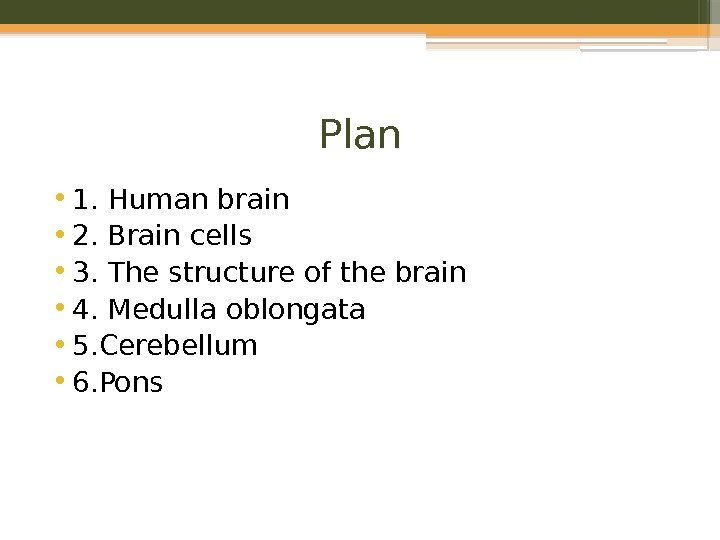
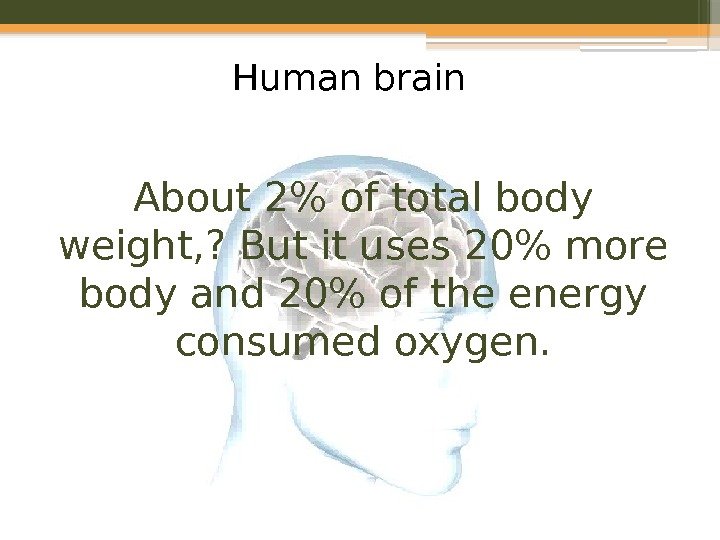
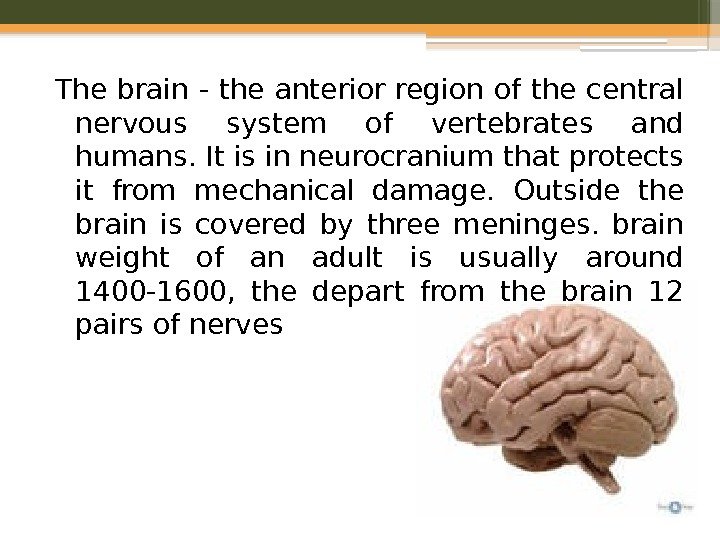
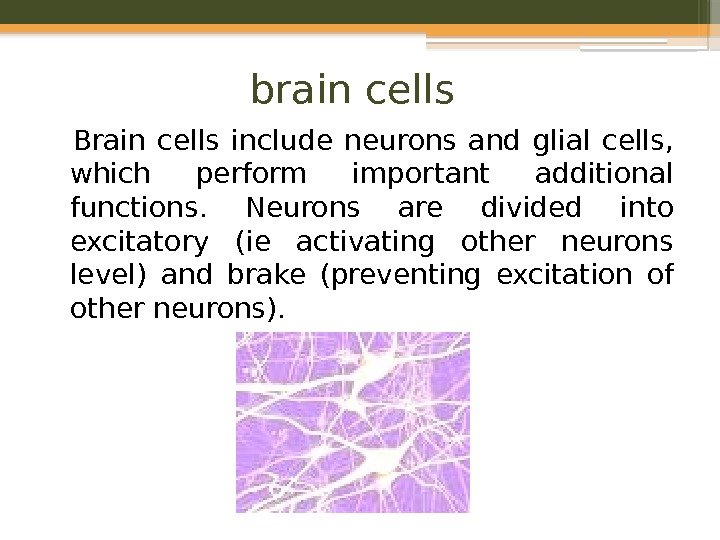


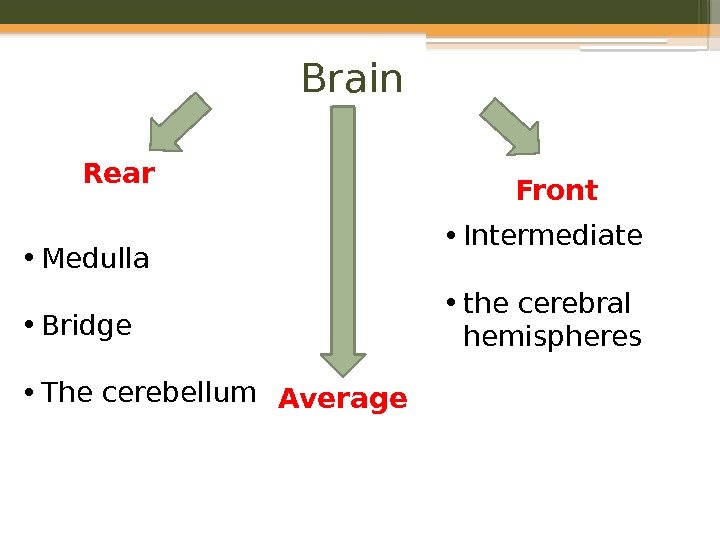

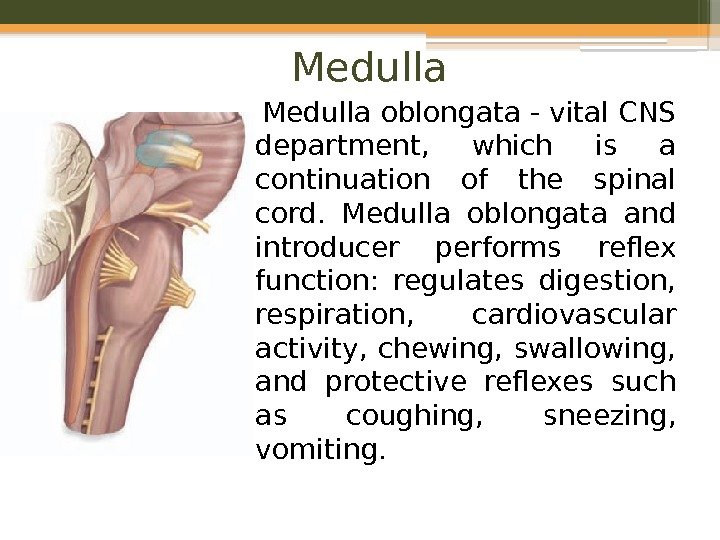
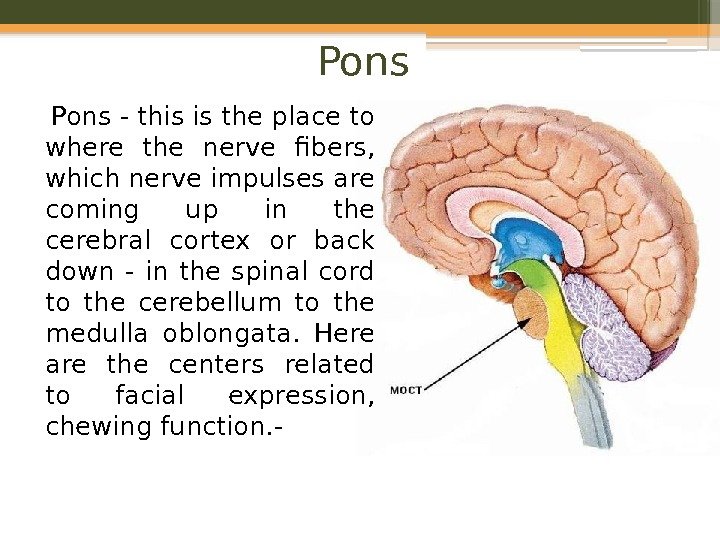
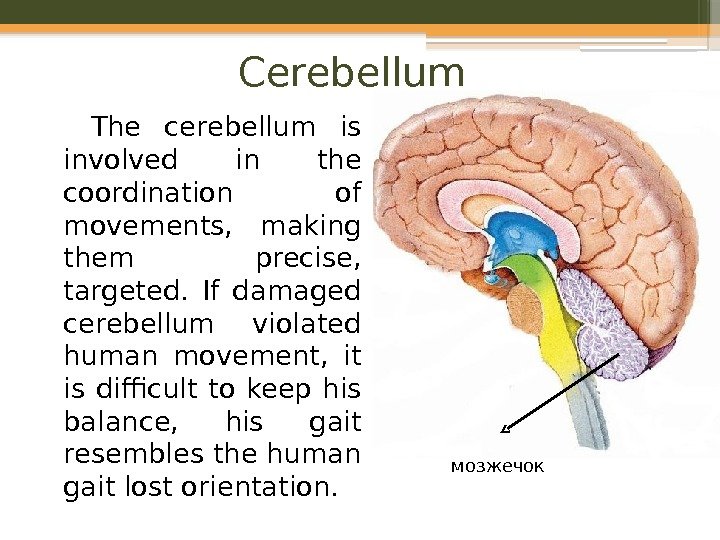
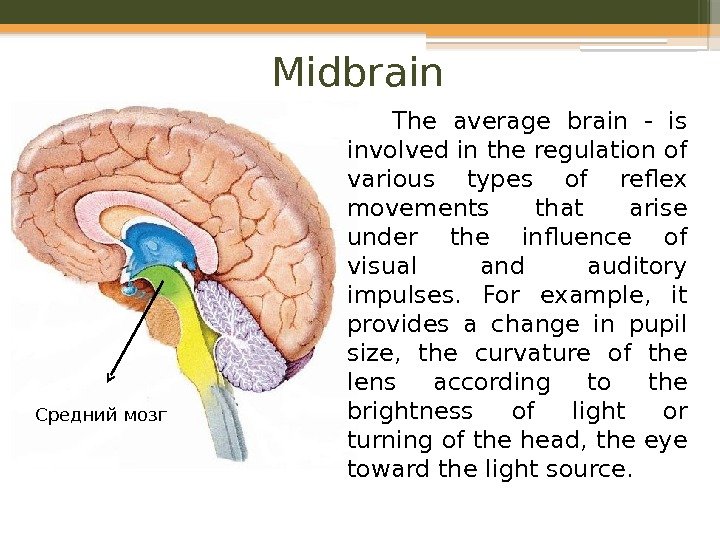

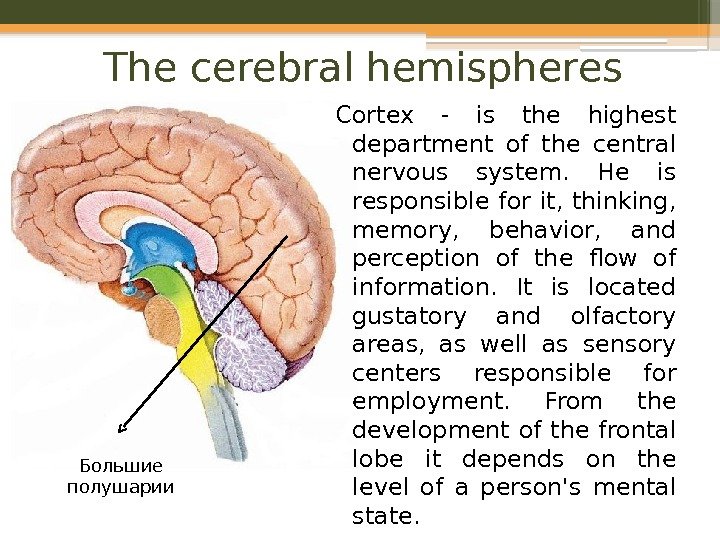
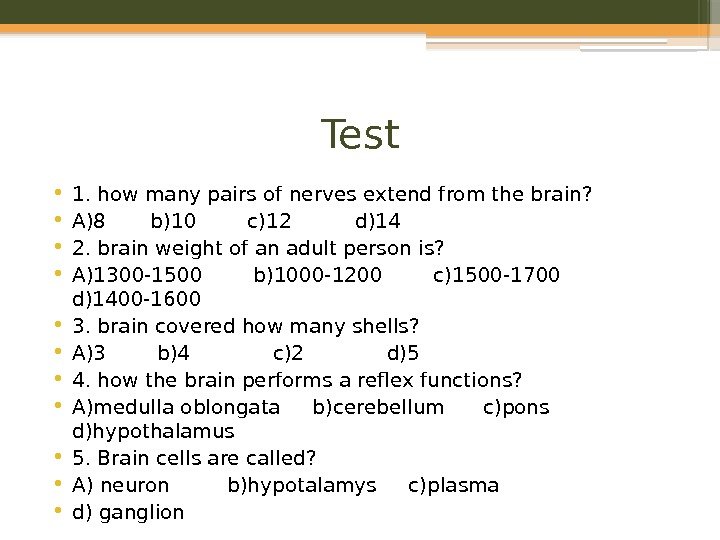
ze_mozg.pptx
- Размер: 388.8 Кб
- Автор: Айбек Базилов
- Количество слайдов: 16
Описание презентации The brain Done by: Aibek Bazilov, 206 A по слайдам
 The brain Done by: Aibek Bazilov, 206 A Checked by: Dinara Azretalievna Almaty 2016 Kazakh – Russian Medical University
The brain Done by: Aibek Bazilov, 206 A Checked by: Dinara Azretalievna Almaty 2016 Kazakh – Russian Medical University
 Plan • 1. Human brain • 2. Brain cells • 3. The structure of the brain • 4. Medulla oblongata • 5. Cerebellum • 6. Pons
Plan • 1. Human brain • 2. Brain cells • 3. The structure of the brain • 4. Medulla oblongata • 5. Cerebellum • 6. Pons
 About 2% of total body weight, ? But it uses 20% more body and 20% of the energy consumed oxygen. Human brain
About 2% of total body weight, ? But it uses 20% more body and 20% of the energy consumed oxygen. Human brain
 The brain — the anterior region of the central nervous system of vertebrates and humans. It is in neurocranium that protects it from mechanical damage. Outside the brain is covered by three meninges. brain weight of an adult is usually around 1400 -1600, the depart from the brain 12 pairs of nerves
The brain — the anterior region of the central nervous system of vertebrates and humans. It is in neurocranium that protects it from mechanical damage. Outside the brain is covered by three meninges. brain weight of an adult is usually around 1400 -1600, the depart from the brain 12 pairs of nerves
 brain cells Brain cells include neurons and glial cells, which perform important additional functions. Neurons are divided into excitatory (ie activating other neurons level) and brake (preventing excitation of other neurons).
brain cells Brain cells include neurons and glial cells, which perform important additional functions. Neurons are divided into excitatory (ie activating other neurons level) and brake (preventing excitation of other neurons).
 The structure of the brain The white and gray matter of the brain is the basis of its functioning. White matter forms a conductive path. They connect the brain with the spinal, as well as parts of the brain together.
The structure of the brain The white and gray matter of the brain is the basis of its functioning. White matter forms a conductive path. They connect the brain with the spinal, as well as parts of the brain together.
 Gray matter in the form of individual clusters — cores — disposed within white matter. Gray matter forms the cortex. , In the brain surface. From different clusters of gray matter of the brain moves away 12 pairs of cranial nerves
Gray matter in the form of individual clusters — cores — disposed within white matter. Gray matter forms the cortex. , In the brain surface. From different clusters of gray matter of the brain moves away 12 pairs of cranial nerves
 Brain Rear Average Front • Medulla • Bridge • The cerebellum • Intermediate • the cerebral hemispheres
Brain Rear Average Front • Medulla • Bridge • The cerebellum • Intermediate • the cerebral hemispheres
 Of the brain
Of the brain
 Medulla oblongata — vital CNS department, which is a continuation of the spinal cord. Medulla oblongata and introducer performs reflex function: regulates digestion, respiration, cardiovascular activity, chewing, swallowing, and protective reflexes such as coughing, sneezing, vomiting.
Medulla oblongata — vital CNS department, which is a continuation of the spinal cord. Medulla oblongata and introducer performs reflex function: regulates digestion, respiration, cardiovascular activity, chewing, swallowing, and protective reflexes such as coughing, sneezing, vomiting.
 Pons — this is the place to where the nerve fibers, which nerve impulses are coming up in the cerebral cortex or back down — in the spinal cord to the cerebellum to the medulla oblongata. Here are the centers related to facial expression, chewing function. —
Pons — this is the place to where the nerve fibers, which nerve impulses are coming up in the cerebral cortex or back down — in the spinal cord to the cerebellum to the medulla oblongata. Here are the centers related to facial expression, chewing function. —
 Cerebellum The cerebellum is involved in the coordination of movements, making them precise, targeted. If damaged cerebellum violated human movement, it is difficult to keep his balance, his gait resembles the human gait lost orientation. мозжечок
Cerebellum The cerebellum is involved in the coordination of movements, making them precise, targeted. If damaged cerebellum violated human movement, it is difficult to keep his balance, his gait resembles the human gait lost orientation. мозжечок
 Midbrain The average brain — is involved in the regulation of various types of reflex movements that arise under the influence of visual and auditory impulses. For example, it provides a change in pupil size, the curvature of the lens according to the brightness of light or turning of the head, the eye toward the light source. Средний мозг
Midbrain The average brain — is involved in the regulation of various types of reflex movements that arise under the influence of visual and auditory impulses. For example, it provides a change in pupil size, the curvature of the lens according to the brightness of light or turning of the head, the eye toward the light source. Средний мозг
 Diencephalon Intermediate brain located above the midbrain and under the cerebral hemispheres of the forebrain. It has two main divisions: the visual hillocks (thalamus) and the hypothalamic region (hypothalamus). Its departments are located as centers of thirst, hunger, maintain a constant internal environment. With the participation of an intermediate brain function performed endocrine, autonomic nervous system. Промежуточны й мозг
Diencephalon Intermediate brain located above the midbrain and under the cerebral hemispheres of the forebrain. It has two main divisions: the visual hillocks (thalamus) and the hypothalamic region (hypothalamus). Its departments are located as centers of thirst, hunger, maintain a constant internal environment. With the participation of an intermediate brain function performed endocrine, autonomic nervous system. Промежуточны й мозг
 The cerebral hemispheres Cortex — is the highest department of the central nervous system. He is responsible for it, thinking, memory, behavior, and perception of the flow of information. It is located gustatory and olfactory areas, as well as sensory centers responsible for employment. From the development of the frontal lobe it depends on the level of a person’s mental state. Большие полушарии
The cerebral hemispheres Cortex — is the highest department of the central nervous system. He is responsible for it, thinking, memory, behavior, and perception of the flow of information. It is located gustatory and olfactory areas, as well as sensory centers responsible for employment. From the development of the frontal lobe it depends on the level of a person’s mental state. Большие полушарии
 Test • 1. how many pairs of nerves extend from the brain? • A)8 b)10 c)12 d)14 • 2. brain weight of an adult person is? • A)1300 -1500 b)1000 -1200 c)1500 -1700 d)1400 -1600 • 3. brain covered how many shells? • A)3 b)4 c)2 d)5 • 4. how the brain performs a reflex functions? • A)medulla oblongata b)cerebellum c)pons d)hypothalamus • 5. Brain cells are called? • A) neuron b)hypotalamys c)plasma • d) ganglion
Test • 1. how many pairs of nerves extend from the brain? • A)8 b)10 c)12 d)14 • 2. brain weight of an adult person is? • A)1300 -1500 b)1000 -1200 c)1500 -1700 d)1400 -1600 • 3. brain covered how many shells? • A)3 b)4 c)2 d)5 • 4. how the brain performs a reflex functions? • A)medulla oblongata b)cerebellum c)pons d)hypothalamus • 5. Brain cells are called? • A) neuron b)hypotalamys c)plasma • d) ganglion

